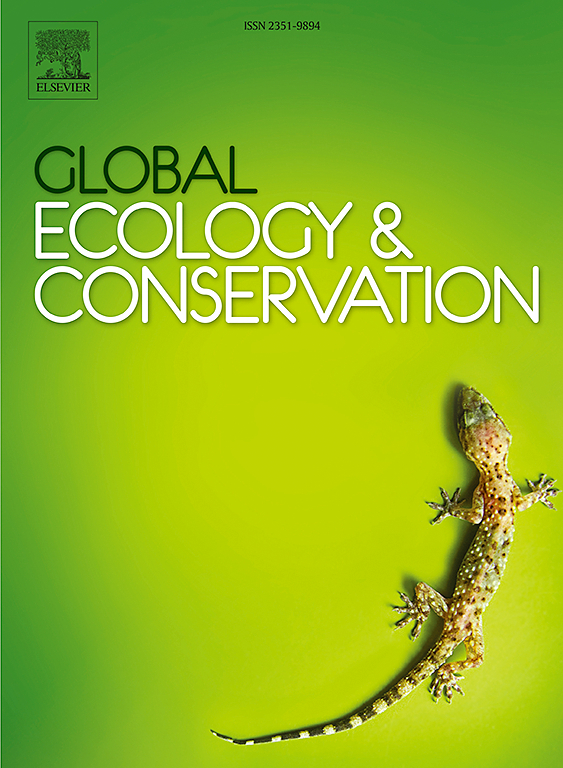The upper forest limit and the fate of bird assemblages in high-Andean páramo ecosystems in the Northern Andes
IF 3.5
2区 环境科学与生态学
Q1 BIODIVERSITY CONSERVATION
引用次数: 0
Abstract
The altitudinal shift of the Upper Forest Limit is a key driver of expansion and contraction cycles in high Andean páramo ecosystems above the treeline. While this historical process is well understood, its effects on páramo fragmentation—and the subsequent impact on avian richness and composition—remain poorly documented. To address this gap, we analyzed long-term bird inventories (1988–2022) across 12 páramo units and evaluated the implications of continued fragmentation as the Upper Forest Limit rises beyond 3400 m above sea level. We framed our analysis within a historical model that reconstructs the most likely Upper Forest Limit shifts over the past 20000 years in the Nariño-Putumayo Páramo District of southwestern Colombia. Our findings suggest that the progressive contraction and fragmentation of páramo habitats—driven by Upper Forest Limit shifts—may significantly influence local bird assemblages, leading to shifts in species richness and composition. Smaller and more isolated páramo units in the Nariño-Putumayo Páramo District could develop avian communities shaped by nestedness patterns, possible species replacement, and local extirpation. Since the rise or fall of the Upper Forest Limit is directly driven by temperature changes, climate change will significantly impact the vulnerability of species dependent on the páramo.
求助全文
约1分钟内获得全文
求助全文
来源期刊

Global Ecology and Conservation
Agricultural and Biological Sciences-Ecology, Evolution, Behavior and Systematics
CiteScore
8.10
自引率
5.00%
发文量
346
审稿时长
83 days
期刊介绍:
Global Ecology and Conservation is a peer-reviewed, open-access journal covering all sub-disciplines of ecological and conservation science: from theory to practice, from molecules to ecosystems, from regional to global. The fields covered include: organismal, population, community, and ecosystem ecology; physiological, evolutionary, and behavioral ecology; and conservation science.
 求助内容:
求助内容: 应助结果提醒方式:
应助结果提醒方式:


